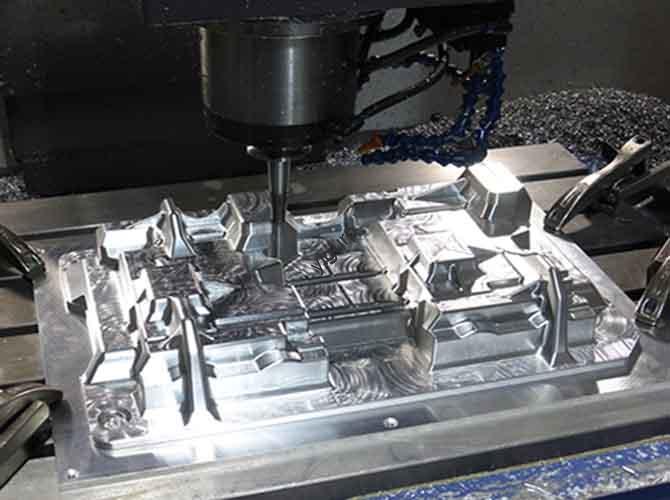Ogni macchinista CNC ha affrontato questo problema: le parti si deformano dopo la lavorazione, gli strumenti si consumano troppo velocemente, oppure il prodotto finale non può resistere a un uso intenso. La soluzione? Materiali per trattamenti termici. Ottimizzando le proprietà del materiale prima o dopo MACCHING CNC, puoi risolvere questi punti critici e portare la tua produzione al livello successivo. Esploriamo come.
1. Perché i materiali per il trattamento termico sono importanti per la lavorazione CNC
Heat treatment isn’t just an extra step—it’s the foundation of high-quality CNC parts. Here’s how it solves 4 common manufacturing problems:
| Problema risolto | How Heat Treatment Helps | Esempio nel mondo reale |
|---|---|---|
| Poor Wear Resistance | Processi comespegnimento boost material hardness by 30–50%, making parts last longer. | A CNC-machined steel gear treated with quenching lasts 2x longer than an untreated one. |
| Part Deformation/Cracking | Ricottura eliminates residual stresses from machining, Mantenere le parti dimensionalmente stabili. | A large aluminum plate for aerospace use: without annealing, it warped 0.5mm; with annealing, warpage dropped to 0.1mm. |
| Difficult Cutting Performance | Normalizzare softens tough materials (PER ESEMPIO., acciaio ad alto contenuto di carbonio), reducing tool force by 20%. | Machining an untreated 4140 steel bar takes 10 minuti; a normalized one takes 7 minuti. |
| Weak Corrosion Resistance | Nitrurazione adds a protective layer to materials, making them resistant to chemicals or saltwater. | A CNC-machined marine bolt treated with nitriding didn’t rust after 6 mesi in acqua di mare (untreated bolts rusted in 1 mese). |
2. Metodi comuni di trattamento termico per materiali lavorati a CNC
Not all heat treatments are the same—you need to pick the right one for your material and part. Di seguito sono riportati il 3 main categories, with their key details:
2.1 Trattamento termico complessivo (Per le proprietà della parte intera)
These methods treat the entire material, ideal for parts that need uniform strength or flexibility.
| Metodo | Passaggi di processo | Meglio per i materiali | Benefit for CNC Machining |
|---|---|---|---|
| Ricottura | Heat to 800–950°C → Hold 1–3 hours → Cool slowly (air or furnace). | Alluminio, acciaio a basso contenuto di carbonio | Improves cutting speed by 15–20%. |
| Normalizzare | Heat to 850–1000°C → Hold 1 hour → Cool faster than annealing (still air). | Medium-carbon steel, ghisa | Creates finer material structure for smoother CNC cuts. |
| Spegnimento + Tempra | 1. Spegnere: Heat to 800–900°C → Cool rapidly (Acqua/olio). 2. Temperare: Reheat to 200–600°C → Cool. | Acciaio ad alto contenuto di carbonio, acciaio in lega | Bilancia la durezza (from quenching) e tenacità (dal temperamento) for durable parts. |
2.2 Trattamento termico superficiale (Per la resistenza dello strato esterno)
Use these when you need a hard surface but a flexible core (PER ESEMPIO., marcia, alberi).
- Induction Heating Quenching: Uses electromagnetic induction to heat the surface (2–5mm deep) in 10–30 seconds, Quindi spegnere. Perfect for high-volume CNC parts (PER ESEMPIO., assi automobilistici) because it’s fast and automated.
- Laser Heating Quenching: A high-energy laser scans the surface, heating it to 900–1200°C in milliseconds. Great for precision parts (PER ESEMPIO., Strumenti medici) since it causes almost no deformation.
2.3 Trattamento termico chimico (Per strati protettivi)
These methods add elements (carbonio, azoto) to the material’s surface for extra protection.
- Carburazione: Heat the part in a carbon-rich medium (850–950 ° C.) for 2–8 hours. Carbon penetrates 0.5–2mm deep, making the surface hard (HRC 58–62) while keeping the core soft. Ideal for CNC-machined gears or camshafts.
- Nitrurazione: Heat in a nitrogen medium (500–550 ° C.) for 10–40 hours. Forma un sottile (0.1–0,5 mm) hard layer that resists corrosion. Perfect for parts used in chemical plants or marine equipment.
3. How to Choose the Right Heat Treatment for Your CNC Project
Potresti chiedere: “With so many options, how do I pick?” Follow this 3-step process:
- Define Your Part’s Goal: Do you need wear resistance (PER ESEMPIO., utensili)? Resistenza alla corrosione (PER ESEMPIO., parti marine)? Or easy machining (PER ESEMPIO., prototipi)?
- Match the Material: Aluminum works best with annealing; high-carbon steel needs quenching + tempra; stainless steel benefits from nitriding.
- Consider Production Speed: For fast turnaround (PER ESEMPIO., 1-week prototypes), use induction quenching. For long-lasting parts (PER ESEMPIO., macchinari industriali), choose carburizing or nitriding.
Esempio: If you’re CNC-machining a stainless steel valve for a chemical tank (goal: Resistenza alla corrosione, materiale: acciaio inossidabile, production time: 2 settimane), nitrurazione is the right choice.
4. La prospettiva della tecnologia Yigu
Alla tecnologia Yigu, we’ve helped hundreds of clients optimize CNC production with heat treatment materials. L'errore più grande che vediamo? Skipping heat treatment to save time—only to waste more time fixing deformed parts or replacing tools. We recommend integrating heat treatment early: Per esempio, annealing aluminum before CNC machining cuts tool costs by 25%, and nitriding steel after machining boosts part lifespan by 3x. It’s not just a step—it’s an investment in consistent, Risultati di alta qualità.
Domande frequenti
- Should I heat treat the material before or after CNC machining?Dipende: Annealing/normalizing (to improve cutting) Funziona meglio Prima lavorazione. Quenching/nitriding (to boost hardness/corrosion resistance) is done Dopo lavorazione (per evitare di danneggiare la superficie trattata).
- Il trattamento termico aggiunge costi aggiuntivi ai progetti CNC?A breve termine: SÌ (PER ESEMPIO., la ricottura aggiunge $ 5– $ 15 per parte). A lungo termine: No: il trattamento termico riduce i costi di sostituzione degli utensili del 30% e riduce la rilavorazione (dalla deformazione) di 40%, risparmiando denaro in generale.
- Tutti i materiali lavorati a CNC possono essere trattati termicamente?La maggior parte lattina: Acciaio, alluminio, e il titanio rispondono bene. Le eccezioni includono alcune materie plastiche (PER ESEMPIO., Pla) e metalli teneri (PER ESEMPIO., rame puro)—il trattamento termico non migliorerà le loro proprietà in modo significativo.
